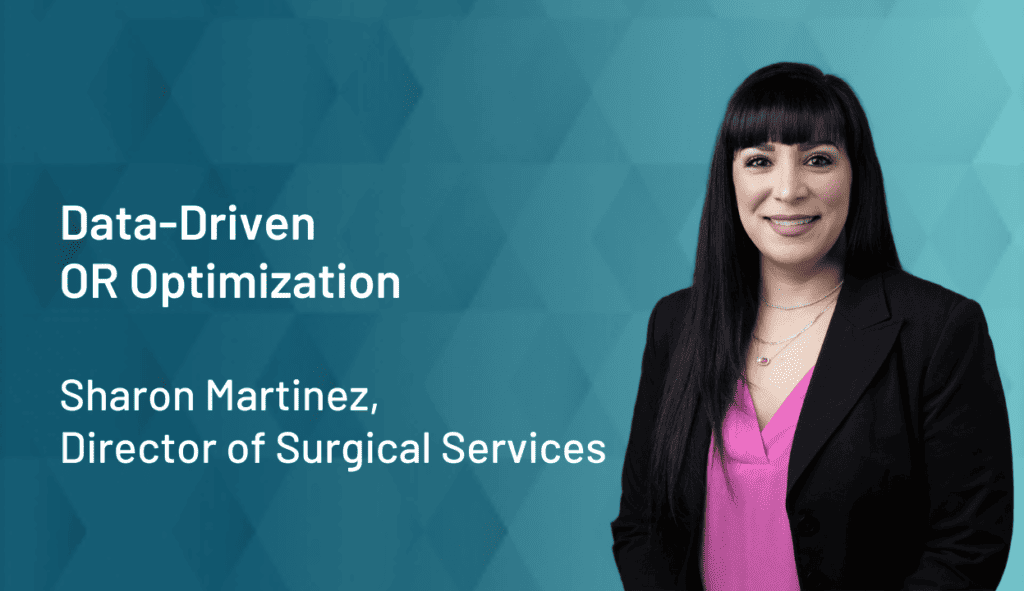
Blog
Tips to Improve OR Turnover Time, On-Time Starts, and Utilization with Data
Learn More

Caresyntax Blog
March 12, 2024
When Universal Health Services (UHS) wanted to run an OR block utilization pilot program with the Caresyntax platform, Kat DeGeiso jumped at the chance to lead it.
Kat is the System Director of Surgical Services at UHS-owned Northern Nevada Health System, where she oversees the ambulatory surgery center and both of the system’s acute-care facilities. She says there were three goals for the pilot: reduce faxing and manual steps, improve OR management, and simplify OR scheduling.
“We needed a better way of communicating that did not rely on the fax machine or phone calls,” she says. “We had multiple offices sending in faxes and someone had to sift through them and scan them into the EMR or make copies and put them in a chart. It was time-consuming and redundant. We knew there had to be a better way.”
The OR scheduling pilot ran from June 1 to Sept 1, 2023 and has already proved successful by several measures. “We have seen a major reduction in faxing and almost $20,000 in cost savings from the get-go. Reducing faxing was amazing,” says DeGeiso.
The Northern Nevada team also has seen improved visibility into the OR scheduling process.
“We wanted to make sure that operating rooms did not sit empty, especially when somebody released their scheduled time,” she said. “Practices now can see when that open time is, and we’re seeing better compliance with releases than we were before.”
Despite the gains, switching from faxes and manual systems to a data-driven scheduling platform has challenges. Here are Kat’s eight tips for leading a successful rollout and improving OR performance in the process:
“Meet with your surgeons and their offices and explain where you’re headed and why,” she says. “They all have different EMRs, some are still on paper, and they do things very differently. You are asking them to change their processes and how they run their practices and send information. There’s going to be resistance, even if it’s a simpler process, the pre-meeting and understanding their challenges will alleviate mistakes.”
“We focused on the efficiency that OR block utilization can create in the hospital because you’re able to see in real time what resources are available,” she says.
“We started training classes about a month before the pilot launched,” she says. “It’s like a bridge building exercise and it definitely pays off in the long run. We invited all the surgery schedulers and physicians to come to our hospital, and we had our surgery schedulers there so they could meet. It was a great networking event and a chance to see the demo and how it could benefit them.”
“Make sure that logins are ready to go at the training session and have users log in to their live application because that is where the bulk of the issues stemmed from when we went live,” DeGeiso says. “Almost all of the tickets were login issues.”
Over the week of going live, the team staggered the offices so they would be able to manage capacity and quickly address concerns.
“If you think you can just roll this out, you can’t,” she says. “You have to be willing to go out and meet the schedulers and physicians in their space, see them in their work environment, and provide ongoing support.”
“We learned as much from the offices that were on paper as we did from the offices that were already engaged in an EMR,” says DeGeiso. “The Caresyntax team was willing to listen and learn and make changes. That established a lot of trust with our offices, and we need to keep that momentum going.”
“The best compliment I received was from one of the surgeons who said,
“I haven’t had a single pre-op nurse come to me and ask me for an H&P since we’ve gone live because in real time my schedulers and my nurses are seeing that it’s there and the office is seeing it as well “
“I hope to see this technology become so robust and easy to use. I want the surgeons to have an application to access while they’re rounding in the ER, or when they’re on call, so when something comes up, they can just put the information in the program. They can see the OR time that’s available, and they can extract anything from their office and move that data to one point. I would love to see this advance even more to the patient level, so the patient is providing us with some of that information, too. And then I want to be able to see the reporting on it,” DeGeiso says.
“It’s exciting to see where we’re headed and that we’re on track to better analytics, and better analytics allow us to perform better patient care, and that’s really what I want to learn.”
Do you want to learn more about Caresyntax platform and services solutions for OR scheduling?
Caresyntax is the only vendor-neutral, enterprise-scale surgical intelligence platform you need to make surgery smarter, safer, and more profitable. We offer software, analytics, and professional services solutions across the entire surgical continuum. To learn more, subscribe to Caresyntax Smart Surgery or schedule a demo.